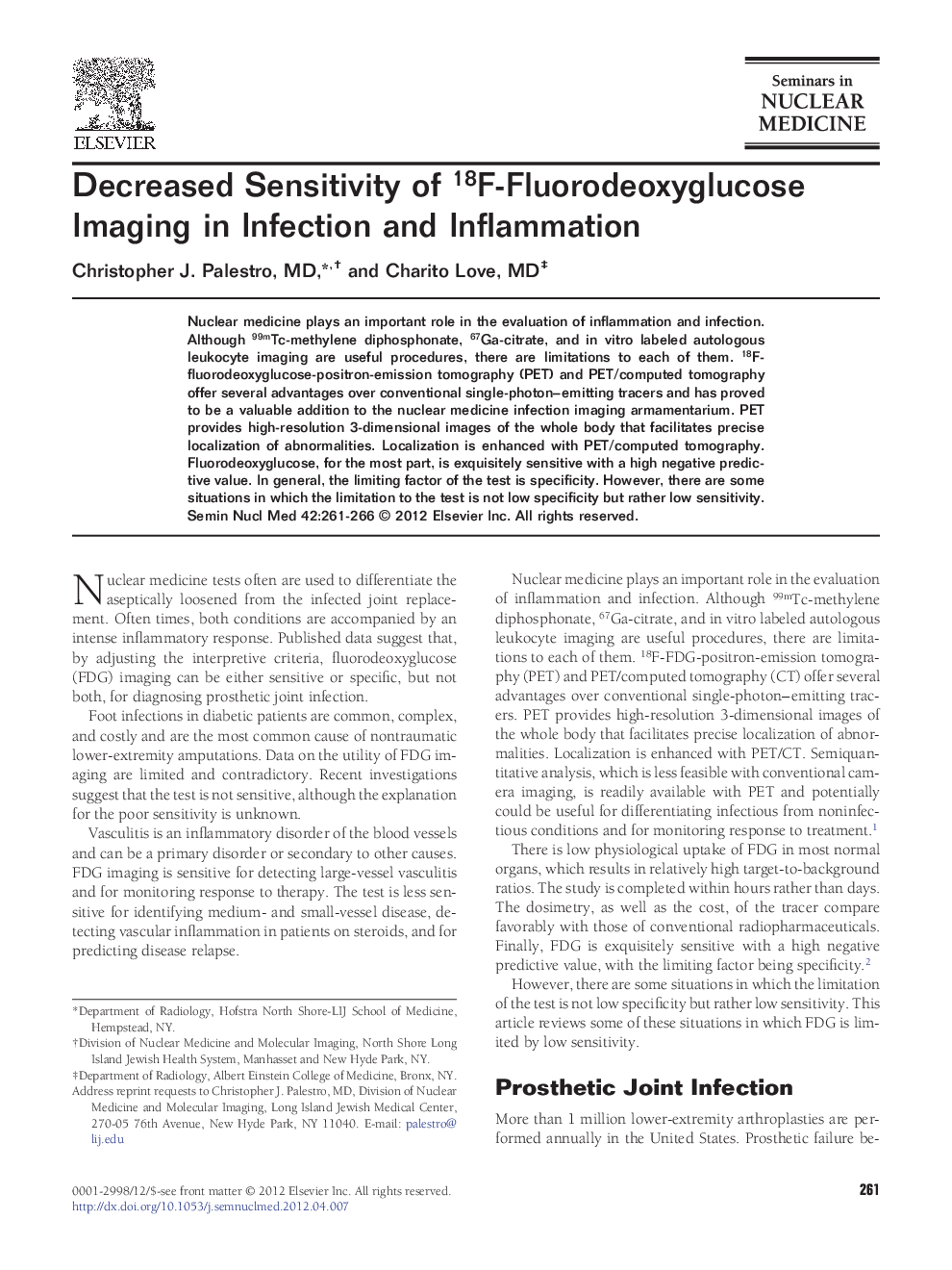| کد مقاله | کد نشریه | سال انتشار | مقاله انگلیسی | نسخه تمام متن |
|---|---|---|---|---|
| 4250998 | 1283946 | 2012 | 6 صفحه PDF | دانلود رایگان |

Nuclear medicine plays an important role in the evaluation of inflammation and infection. Although 99mTc-methylene diphosphonate, 67Ga-citrate, and in vitro labeled autologous leukocyte imaging are useful procedures, there are limitations to each of them. 18F-fluorodeoxyglucose-positron-emission tomography (PET) and PET/computed tomography offer several advantages over conventional single-photon–emitting tracers and has proved to be a valuable addition to the nuclear medicine infection imaging armamentarium. PET provides high-resolution 3-dimensional images of the whole body that facilitates precise localization of abnormalities. Localization is enhanced with PET/computed tomography. Fluorodeoxyglucose, for the most part, is exquisitely sensitive with a high negative predictive value. In general, the limiting factor of the test is specificity. However, there are some situations in which the limitation to the test is not low specificity but rather low sensitivity.
Journal: Seminars in Nuclear Medicine - Volume 42, Issue 4, July 2012, Pages 261–266